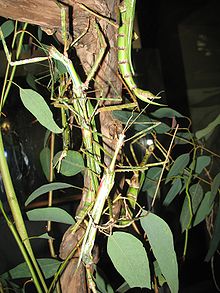
Jean Guillaume Audinet-Serville was a French entomologist, born on 11 November 1775 in Paris. He died on 27 March 1858 in La Ferté-sous-Jouarre.

Tetrigidae is an ancient family in the order Orthoptera, which also includes similar families such as crickets, grasshoppers, and their allies. Species within the Tetrigidae are variously called groundhoppers, pygmy grasshoppers, pygmy devils or "grouse locusts".
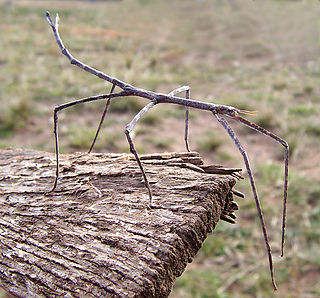
The Phasmatinae are a subfamily of stick insects in the family Phasmatidae. They contain at least three tribes; Bradley and Galil corrected the spelling to "Phasmatinae" and provides a key to tribes.
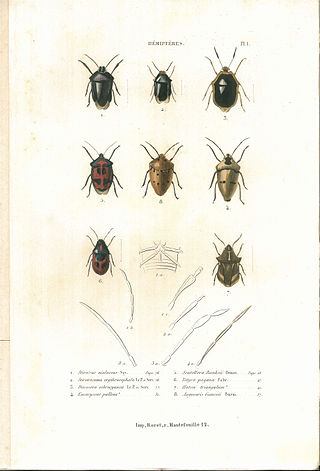
Les Suites à Buffon is a French 19th-century scientific publication.

Eurycnema goliath, commonly known as the goliath stick insect, or the regal stick insect, is a large species of stick insect in the family Phasmatidae, endemic to Australia and considered one of the largest species of stick insects in the country. The species has the Phasmid Study Group number PSG14.
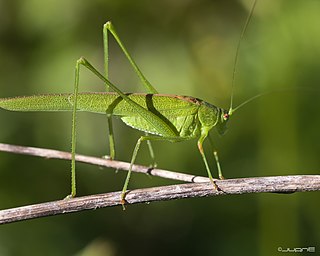
Phaneroptera is an Old World genus of bush crickets in the family Tettigoniidae and is the type genus of the subfamily Phaneropterinae. It was described by Jean Guillaume Audinet-Serville in 1831 and species are recorded from Europe, Africa and Asia.

Trachyderini is a tribe of long-horned beetles in the family Cerambycidae. There are at least 140 genera and 650 described species in Trachyderini.
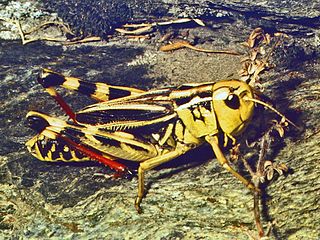
Arcyptera is a genus of grasshoppers belonging to the family Acrididae subfamily Gomphocerinae. These grasshoppers are present in mainland Europe, and in the eastern Palearctic realm through to northeastern Asia.

Spongiphoridae is a family of little earwigs in the suborder Neodermaptera. There are more than 40 genera and 510 described species in Spongiphoridae.

Poekilocerus is a genus of grasshoppers in the family Pyrgomorphidae and the monotypic tribe Poekilocerini. Species are found in the northern half of Africa, and in Southwest and South Asia, often in arid or semi-arid areas.
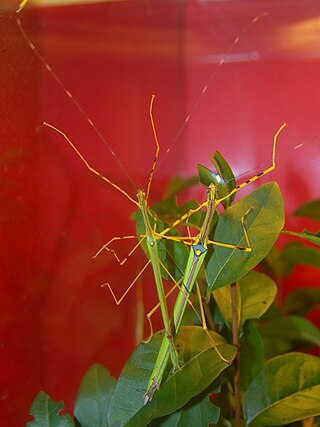
Necroscia is an Asian genus of stick insects in the family Lonchodidae and tribe Necrosciini. Species have been recorded from South-East Asia.

Nemobius is a genus of crickets in the family Trigonidiidae.
Insect tea refers to teas made from leaves bitten by, and the droppings of, insects fed on specific plants. Most insect teas originate from the Southeast Asian region. They are often used in local traditional medicine, but have not been well-studied in the scientific literature.

Phasmatini is a tribe of stick insects in the family Phasmatidae. There are more than 40 described species, found in Australasia, and Asia
Dericorys is the type genus of grasshoppers of the family Dericorythidae. Species have been recorded from Africa, the Iberian peninsula, Atlantic islands and western Asia.

The Cladomorphinae are a subfamily of stick insects in the family Phasmatidae. This taxon is particularly well represented in the Neotropical region, but records also exist for Madagascar, Java and the Maluku Islands.
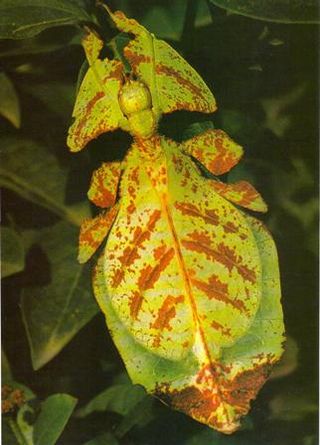
Pulchriphyllium is a genus of leaf insects. It was first established by Griffini in 1898 as a subgenus within the genus Phyllium and is a valid genus since 2021. The distinctive feature of Pulchriphyllium is the presence of lobes on the inside and outside of the fore tibia. In Phyllium are lobes only present on the outside. The representatives of the genus are native to both Sundaland and continental Asia.
Echinosoma is a genus of earwigs in the family Pygidicranidae, erected by Audinet-Serville in 1838.

Mogoplistes is a genus of African and European crickets which is typical of the family Mogoplistidae and tribe Mogoplistini, erected by Jean Guillaume Audinet-Serville in 1838. This genus is distributed around the Mediterranean in mainland Europe and North Africa. In 1984, the scaly cricket was moved from here to the new genus Pseudomogoplistes.
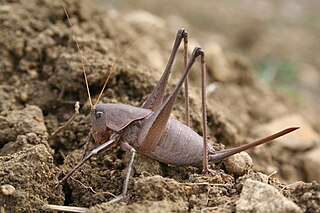
Thyreonotus is a genus of European bush crickets in the tribe Tettigoniini, erected by Jean Guillaume Audinet-Serville in 1838. The recorded distribution of this genus is the Iberian peninsula and France, including Corsica.
